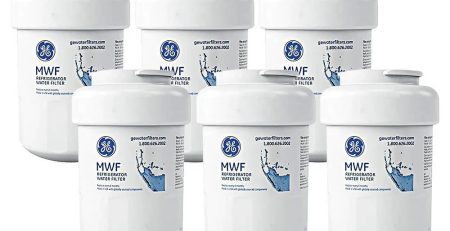What to do when water from your refrigerator filter tastes rancid?
Having an integrated fridge water filter is like those first-world conveniences that are easy to overlook. The water is fresh, refreshing, and typically clean owing to inbuilt filters. Despite the filtration, the water that comes out occasionally tastes bad when you don’t maintain your filter.
Even brand-new refrigerators are susceptible to this issue. Sometimes it starts later and becomes worse and worse till the water tastes terrible. This may occur in any brand of refrigerator & in any model with a dispenser.
This is a simple repair in certain circumstances. But not all the time. When it comes to modern global refrigerators with the best refrigerator water filter, even professionals may require assistance in resolving water difficulties.
Regarding the water delivered by the refrigerator, manufacturers have updated their designs over the years to prevent flaws in the system wherein water may age or remain still. Knowing this, service technicians will frequently have to rely on the maker to direct them to problematic components or issues of concern.
Before you opt for the best fridge water filter, take a look at what you can do to solve the refrigerator filter problem.
1-Change the Filter
The filter isn’t always the issue. However, this is frequently the case.
The foul taste may be caused by problems with the water system, plumbing, mold, or bacteria. But, in general, it’s the filter.
Fridge water dispenser filters do not last indefinitely. You should change them every six months on average. If you replaced your filter once – say, five years ago – this may be your epiphany moment.
The water may taste terrible because germs are developing in the old filter, or perhaps the filter has ceased operating correctly, and the water now tastes like tap water.
A refrigerator water filter that operates properly removes various kinds of junk from the water supply, including:
- chlorine
- organic volatile compounds
- additional pollutants that may exist based on your location & water source
But — and there is a huge but — it’s worth noting that all these filters are far from sophisticated. They do not address issues such as heavy metals & other potentially dangerous substances. A reverse osmosis filtration is a better bet for these pollutants.
As the filter ages, it might get overloaded with grody muck, allowing unfiltered water to sashay straight through filter components & into your glass. As a result, you can detect an “odd” odor or flavor.
There are additional indications that the fridge water filter has outlived its usefulness. You might find that the ice machine is sluggish to manufacture ice or possibly isn’t creating ice at all. You may also note that the water dispenser flow is substantially lower than it was previously. These are indications that the filter is blocked & needs to be replaced.

2-Check the Water Source
If your water supply is highly contaminated, one cycle of filtering may not be sufficient to eliminate lingering aromas and tastes that lead to a nasty taste.
A rotten egg, sulfur, or metal odor is not a sign of a failed water dispenser, yet it may indicate faulty plumbing, a blockage in the system, or delays in the water supply. Inspect if the water tastes strange to determine whether the problem is in your pipework, water supply, or the fixture itself.
In other terms, if water from all of your faucets, not just the fridge, tastes off, you presumably already know that the refrigerator water filter isn’t the issue. This is your water.
Particulates may enter what is ordinarily a sealed system if utility employees have repaired fractured pipes or otherwise operated on surrounding pipelines. Once the supply has been restored, you may detect new scents or flavors. Fortunately, after the pipes are cleaned with new water, the problem generally fixes itself.
3-Check to see if the fridge dispenser is new or unused.
If the fridge sits for a lengthy amount of time without distributing water, the water in the lines may begin to taste nasty. Likewise, running fresh water for a moment may enhance the taste significantly.
In five-second intervals, press and release the dispenser lever, button, or push the switch to release any trapped air. Continue this technique until you have dispensed 10 to 15 glasses of water to guarantee you are consuming clean water.
Before opting for the best refrigerator filter, know that if it’s a new fridge, the water lines may have gathered dust and particles throughout the manufacturing process, creating a health danger to everyone who drinks the water.
It is also suggested to clean the water dispenser by flushing it with distilled vinegar from the inside.
Before you begin, turn off the water supply and the tube into which you intend to pour 2 to 3 cups of distilled vinegar. Allow the vinegar to settle for a few seconds before flushing the system with roughly 2 liters of water.
Conclusion:
Whether it’s a consistent poor taste or just occurs on occasion, determining why the water from the fridge tastes strange is essential for resolving the issue. Therefore, we hope this blog is of great use to you & you will face no further issues.
Call to Action:
Are you looking for the best refrigerator filters? If so, opt for Filters for Less today. Here we never would like you to invest too much in a fridge filter. Therefore, we started a company that sells cheap fridge filters. To know more, visit us at filterforfridge.com.







